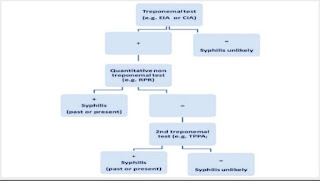A Rare Path of Spread: Thyroid Carcinoma Invading the Internal Jugular Vein Without Nodal Metastasis
Hello Glias !
Venous tumor thrombus arising from thyroid cancer is an extremely uncommon and often overlooked presentation. Most thyroid carcinomas spread via lymphatic pathways, leading to cervical nodal metastases at diagnosis. Direct venous invasion, particularly of the internal jugular vein (IJV), is a sign of aggressive disease and traditionally associated with poor prognosis. Yet, not every case follows the rulebook.
Recently in clinical practice, I encountered a unique case:
A thyroid mass infiltrating the IJV with an intraluminal enhancing tumor thrombus, but no lymph node metastasis on imaging.
This prompted a deeper look into the rare pattern of venous invasion in thyroid cancers.
Why This Finding Matters
Venous invasion:
Signals advanced loco-regional disease, classified under T4 in TNM staging
Increases risk of embolization to lung or even heart
Alters operative planning — vascular control / thrombectomy may be required
Impacts adjuvant therapy decisions
Even in the absence of lymph node involvement, tumor thrombus suggests a hematogenous spread pathway may be active earlier than expected.
What the Literature Tells Us
In a retrospective review of 1171 thyroid cancer patients, only 0.8% showed venous obstruction due to tumor invasion
Key insights from this cohort:
Both papillary and follicular carcinomas exhibited venous involvement
Ultrasound was highly valuable to differentiate compression vs invasion
Presence of venous invasion was linked to worse survival outcomes
Some cases showed IJV invasion without lymph node metastasis, similar to my case observation
This signifies that the absence of nodal spread does not rule out aggressive biological behavior.
Imaging Hallmarks of Tumor Thrombus
Ultrasound/Doppler
Hypoechoic intraluminal thrombus
Internal vascularity → confirms tumor nature
Loss of compressibility
CECT / MRI
Enhancing soft-tissue filling defect with continuity to the primary tumor
Vessel expansion rather than collapse
Useful for surgical mapping
These imaging features help differentiate malignant thrombus from bland thrombosis, avoiding diagnostic pitfalls.
How Does Venous Spread Occur?
Thyroid carcinomas, especially follicular subtype, may show:
Capsular breach → invasion of thyroid veins
Tumor cell growth into IJV, brachiocephalic vein, or even SVC
Potential for extension toward right atrium (rare but documented)
This mechanism bypasses lymphatic routes — explaining imaging patterns like IJV invasion with N0 status.
Clinical and Surgical Implications
Venous invasion demands:
✔ Multidisciplinary planning
✔ Assessment for embolization risk
✔ Possible IJV resection / thrombectomy
✔ Consideration of radioiodine + EBRT in selected cases
Early detection may change prognosis, especially in younger patients where curative intent resection is feasible.
Key Takeaways for Clinicians & Radiologists
Tumor thrombus in thyroid cancer is rare, yet clinically significant
Always evaluate jugular and brachiocephalic veins when imaging suspicious thyroid masses
Doppler ultrasound is a powerful screening tool
Absence of lymph node involvement does not imply low-risk disease
Correct identification can prevent delayed management and adverse outcomes.
- Written by Dr. Upasana Y



Comments
Post a Comment